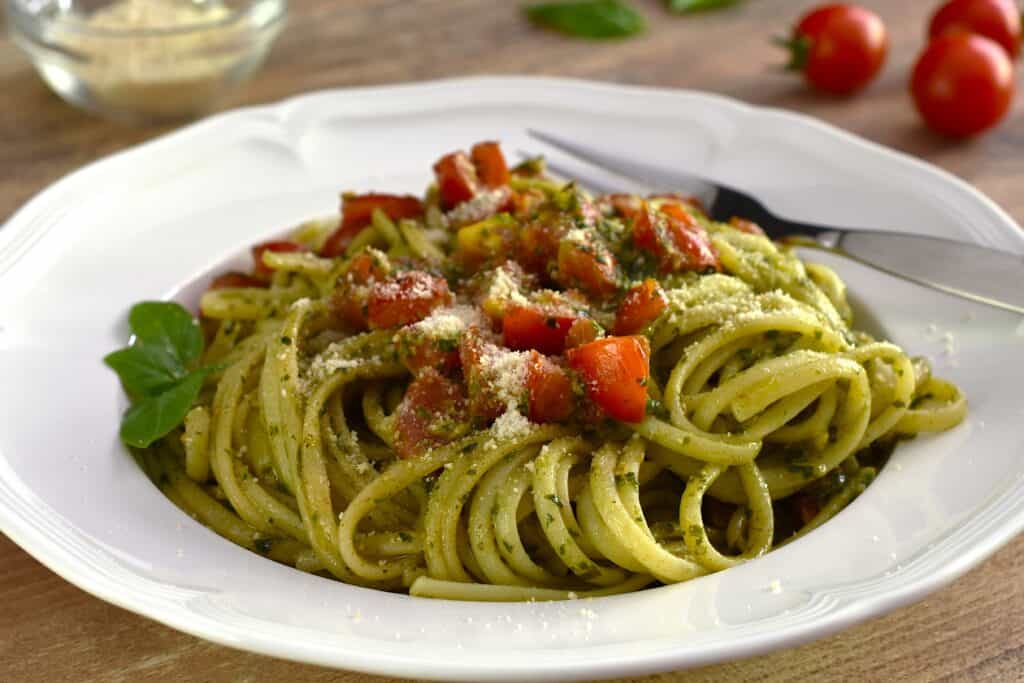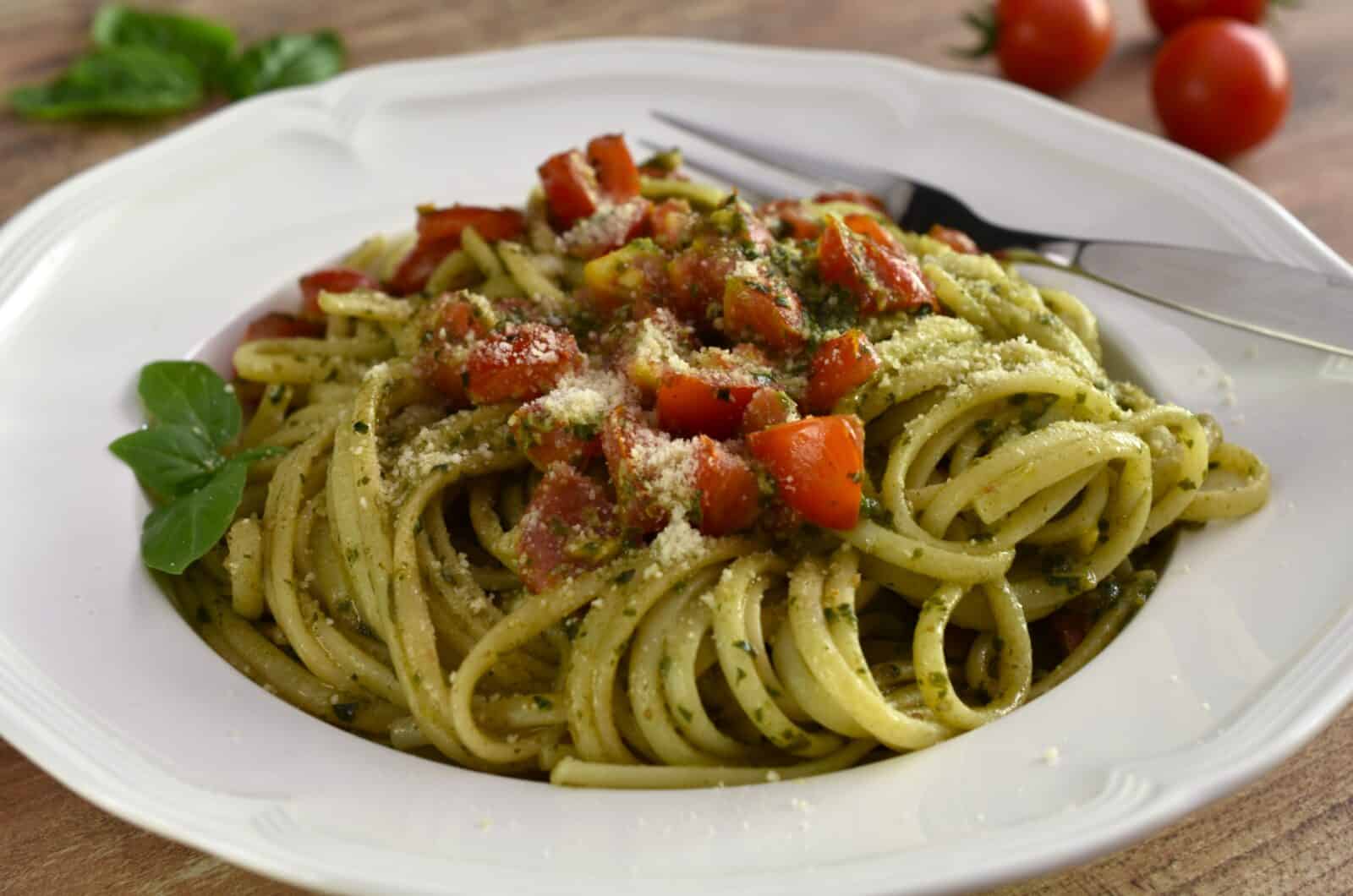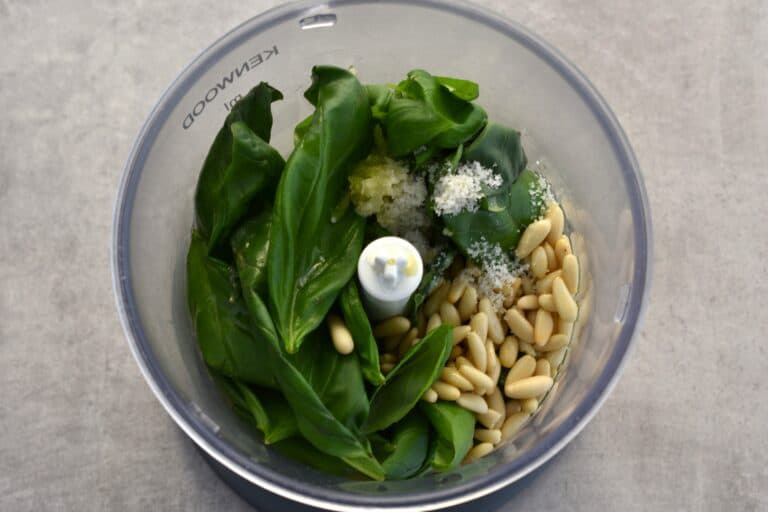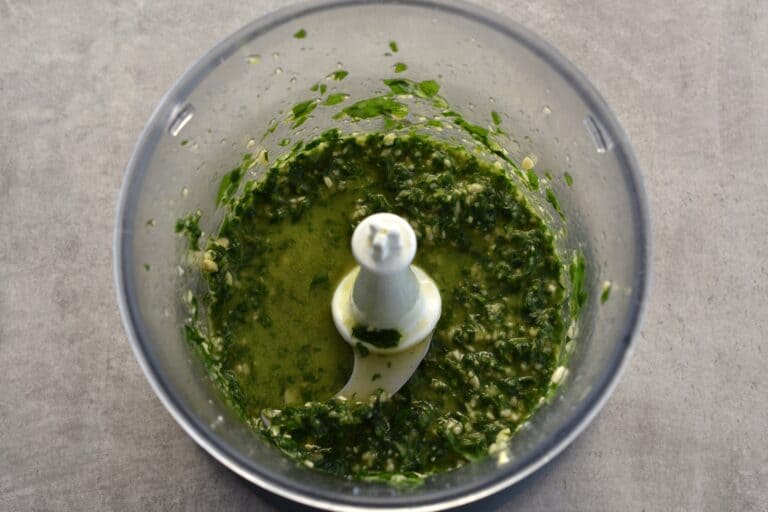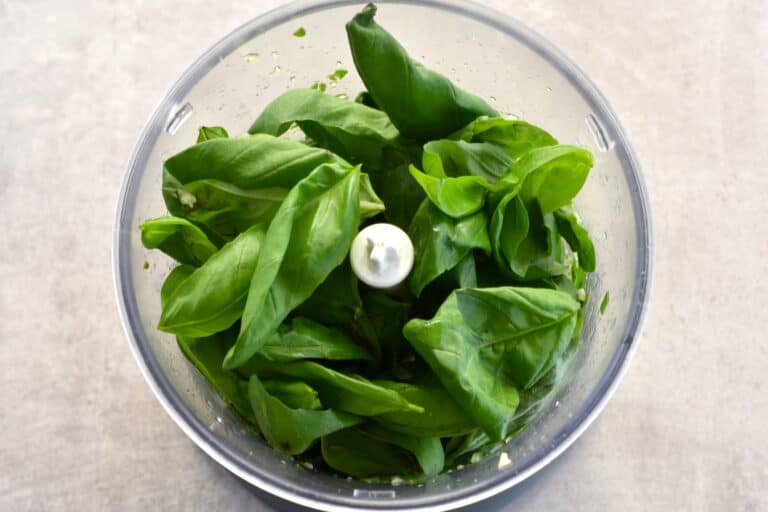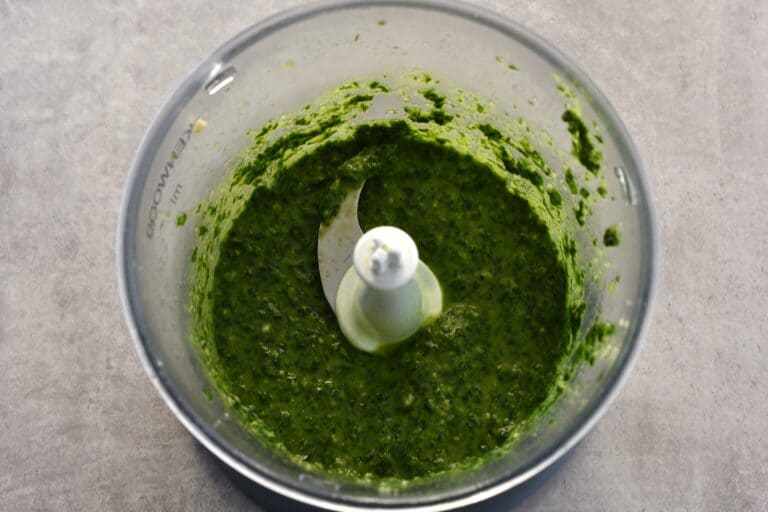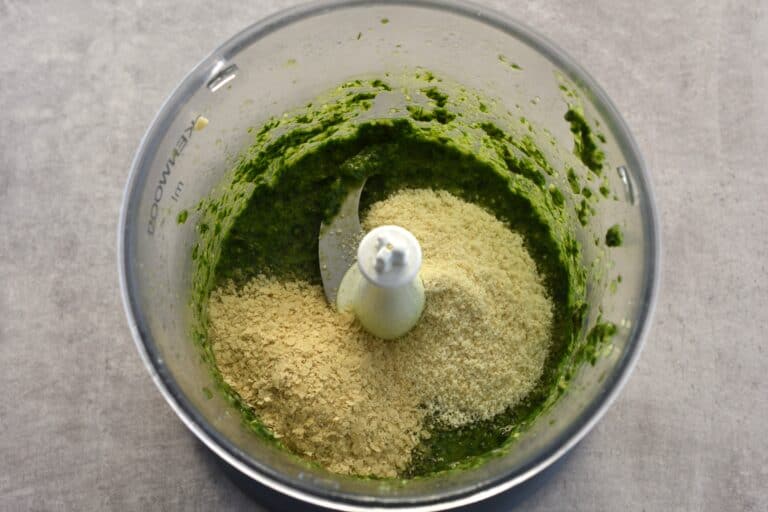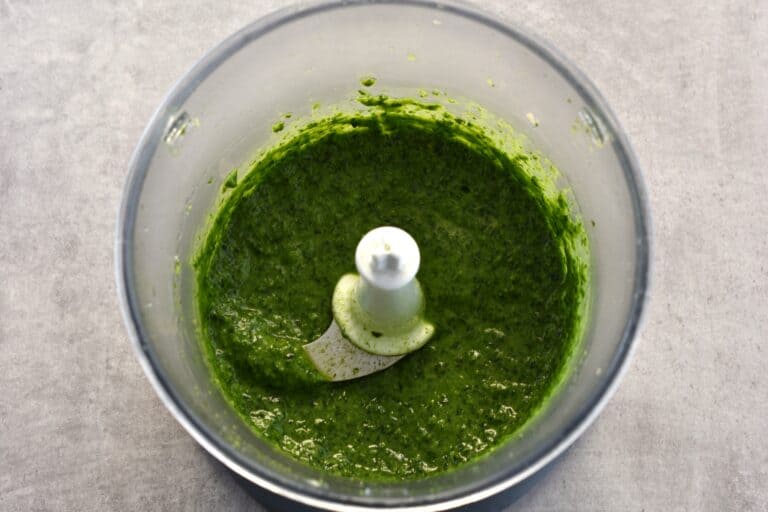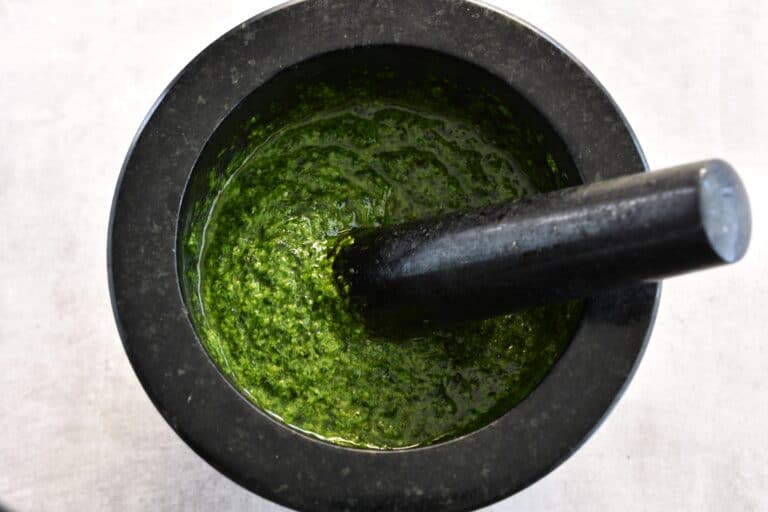Pesto pasta with cherry tomatoes is a light and flavourful dish made with fresh, seasonal ingredients. When health experts talk about the benefits of a Mediterranean diet, they intend dishes like this consisting of pasta with a vegetable sauce and a simple seasoning of extra virgin olive oil and a little salt.
This pasta dish with vegan basil pesto genovese and fresh, juicy cherry tomatoes hits all the marks. It’s light, nutritious and provides plenty of energy, thanks to the easily digested carbs. For an even healthier version, opt for wholemeal pasta instead of white. Carbs are not the devil, and pasta has been an important part of the Mediterranean diet for centuries.
This pasta dish with cherry tomatoes and pesto is quick and easy to make and always a crowd-pleaser. You can have it on the table in 15 minutes. It’s so simple – you don’t even need a recipe. I recommend making the pesto first, which takes about 10 minutes, and then you can chop the tomatoes while the pasta is cooking. Strain the pasta, stir in the pesto, top with the tomatoes, and serve!
The fresh tomatoes offer a refreshing contrast to the pungent, aromatic pesto. Shop-bought pesto can get quite nauseating after a while, especially just pasta with pesto. That’s not the case with this homemade basil pesto recipe, which you can’t get too much of, and sweet cherry tomatoes make a great contrast in texture, colour and flavour.
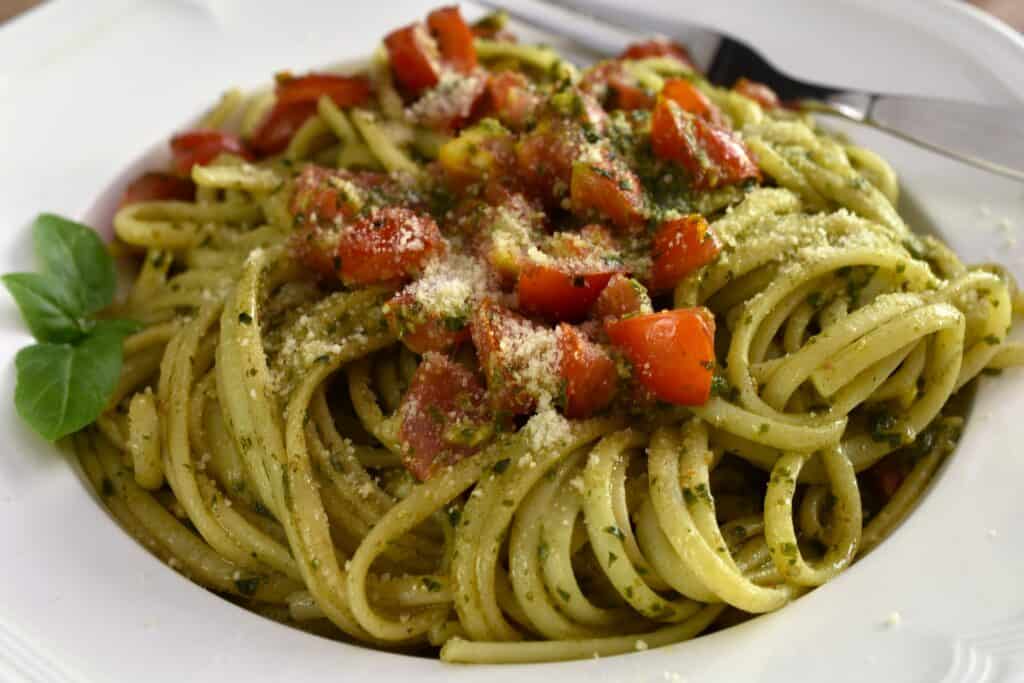
How to make pesto and cherry tomato pasta
Ingredients
You’ll find the exact quantities of each ingredient in the recipe card at the bottom of this page.
Pasta
Long pasta like spaghetti or linguine is ideal for this dish, but short pasta shapes like penne, fusili or tortiglioni are also a good alternative, especially if you want to serve this dish cold (see serving suggestions below). I used linguine this time.
Vegan basil pesto
I recommend you make your own vegan basil pesto. It’s really quick and easy to make once you get the hang of it. Plus, you have full control over what goes in it, avoiding needless and harmful ingredients that are designed to make shop-bought pesto last for years. That said, if you’re ok with store-bought, Barilla makes a decent vegan basil pesto. When you’ve got an extra 10 minutes, try making this homemade vegan basil pesto genovese – it’s the best! If you don’t want to leave this page, you’ll find the ingredient list, quantities, and instructions to make it in the recipe card below.
Tomatoes
While cherry tomatoes are the prettiest, you can use any kind of tomatoes for this recipe. Choose the freshest, ripest and juiciest you can find. For the photos on this page, I used homegrown cherry tomatoes from the garden and cut them into quarters.
Salt
Last but not least, you’ll need salt – to cook the pasta and season the tomatoes. I use unrefined sea salt for all my recipes.
Instructions
You’ll find step-by-step instructions with photos in the recipe card at the bottom of this page.
- If using homemade vegan basil pesto, make that first. The ingredient list, quantities, and instructions to make it are in the recipe card below. If using shop-bought, jump to the next step.
- Put the water on to boil for the pasta and in the meantime, chop the tomatoes.
- Plunge the pasta into the boiling salted water and cook it for the time stated on the packet.
- Drain the pasta, reserving some of the cooking water.
- Stir the pesto into the pasta, coating it well. You’ll almost certainly need to thin down the pesto. Use the cooking water for that. Add a tablespoon at a time until you reach the desired consistency. The sauce should glide over the pasta. Don’t use oil for this – it will just make it very oily.
- Add the chopped tomatoes, which you have seasoned with a bit of salt, toss, and serve immediately.
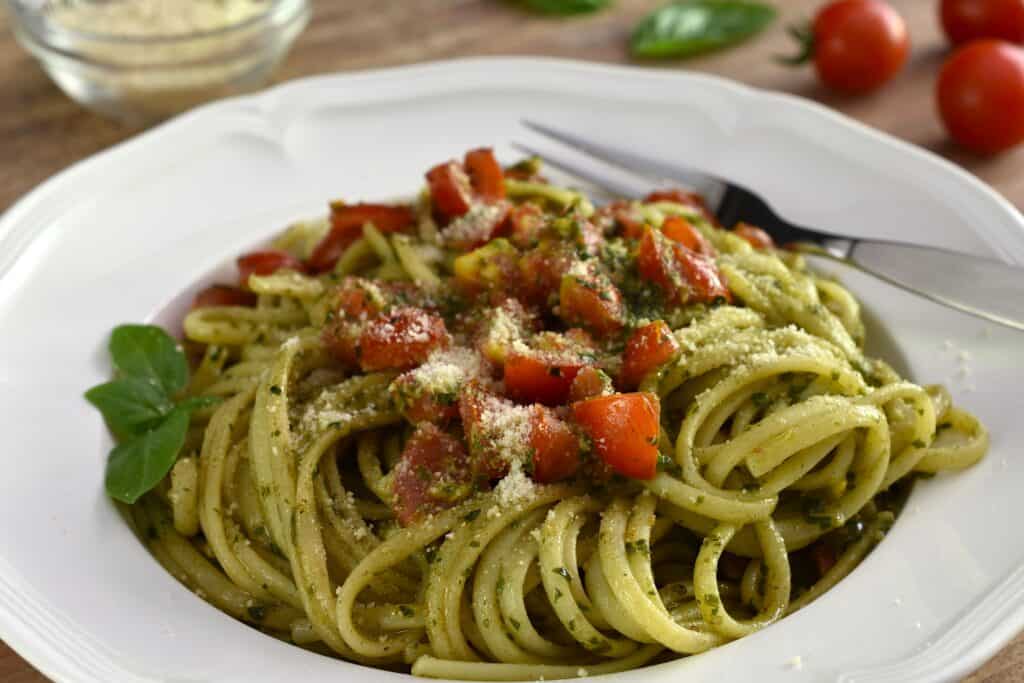
How to serve pesto and cherry tomato pasta
You can either plate the pasta in the kitchen or take the pan to the table and serve it from there. I personally prefer to plate it in the kitchen, where I can regulate the portions better and mop up any splashes on the side of the plate before serving.
The trick is to work as quickly as possible (pasta gets cold surprisingly quickly). Get the pasta on the plates first, and then top with the tomatoes. Using a serving spoon and fork, wrap the pasta around the fork with a twisting motion. Slip the spoon underneath to hold it in place, and transfer it to the plate. When all the pasta is on the plates, top it with the rest of the sauce and tomatoes.
I offer vegan parmesan cheese separately so that people can help themselves if they want it.
Pesto pasta with cherry tomatoes is filling and satisfying enough to be a meal in itself for lunch or dinner, although Italians usually eat about 80 g of pasta as a first course, followed by vegetables and some protein as a main course.
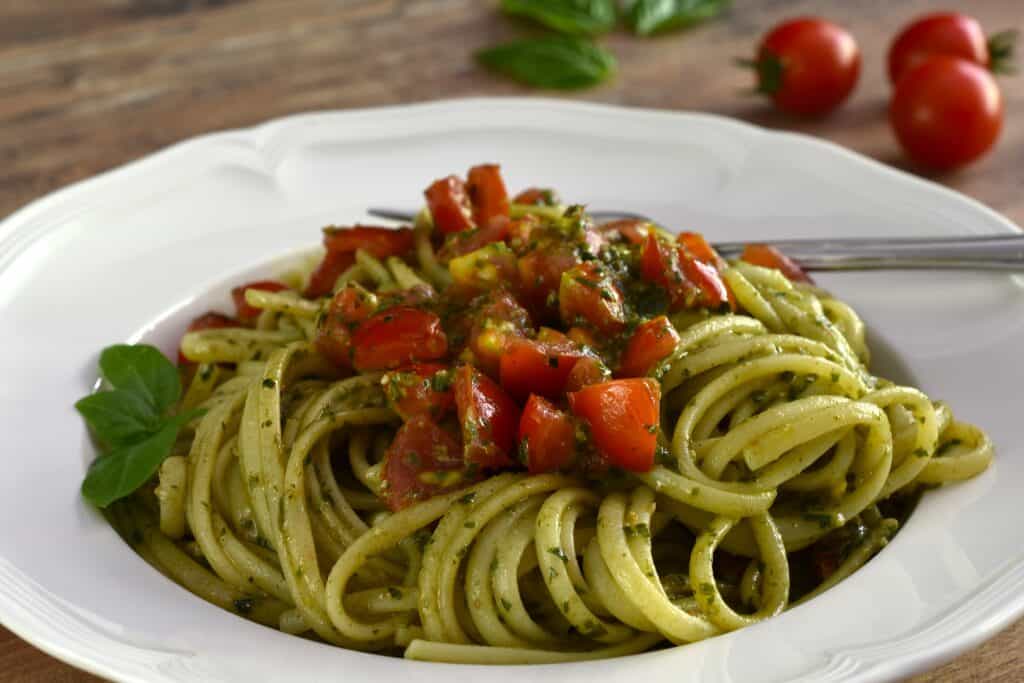
Can you keep leftover pesto and cherry tomato pasta?
Yes, you can keep leftover pesto and cherry tomato pasta if you follow a few simple tips and tricks.
Firstly, long pasta is the worst kind to refrigerate and reheat. If you want to make extra so that you have a meal for the following day, I suggest you use short pasta, like penne, farfalle, or fusili. That way, you can transform this dish into a pasta salad for the day after.
Secondly, basil pesto oxidises quickly when exposed to heat. To avoid that, keep some pesto aside and only add it, along with the tomatoes, when the pasta has cooled down. Pasta becomes sticky as it cools, so add a few drops of oil and stir to keep it lubricated and prevent it from clumping.
Thirdly, the acid in the tomatoes will cause the pasta to go off faster than it would without. As mentioned above, you can avoid this by adding the tomatoes once the pasta has cooled down and keeping the dish in the fridge until you’re ready to eat it. Once you’ve added the tomatoes, it will keep for 24 hours.
Can you freeze pasta with pesto and cherry tomatoes?
I don’t recommend freezing this dish – it alters the texture and flavour. Plus, it takes longer to defrost it than it does to make it from scratch.
I’m sure you’ll love this vegan pesto and cherry tomato pasta recipe! If you try it, I’d love to hear about it! Let me know in the comments below, or take a quick pic and share it on social media. Don’t forget to tag me on Instagram or Facebook @vegan_hot_stuff – I love seeing your re-creations!
Frequently asked questions
Is basil pesto vegan?
Shop-bought pesto isn’t usually vegan unless it specifically says so on the jar. Barilla makes a half-decent vegan pesto if you’re looking for a store-bought, dairy-free pesto. Some non-vegans say it’s better than the normal version.
Why is some pesto not vegan?
Commercially produced pesto often contains ingredients like milk, milk powder, milk protein, maize fibre, cashew nuts, lactose whey, whey protein concentrate, wheat flour, butter, and potato. These are some of the ingredients that I found on the labels of 3 of the most famous Italian brands: Barilla, Buitoni, and Giovanni Rana. Artisan basil pesto is not made with any of those ingredients. However, artisan basil pesto contains Parmesan or Pecorino cheese.
What are the ingredients in basil pesto?
There are only seven ingredients in artisan basil pesto: fresh basil leaves, extra virgin olive oil, pine nuts, garlic, salt, Parmesan or pecorino cheese, and lemon juice, citric acid, or ascorbic acid as an antioxidant. It’s so easy to veganise basil pesto and steer clear of unwanted and unnecessary additives and ingredients obtained through the exploitation of animals by substituting cheese with nutritional yeast flakes and/or vegan parmesan cheese.
I hope you liked this recipe for cherry tomato and pesto pasta! If you did, it would be great if you could give it 5 stars and leave a comment below! It helps other readers to find my content and posts and ultimately makes my blog more successful! Thank you so much for your support! Deborah xx
Before you go, why don’t you check out some other delicious vegan summer recipes…
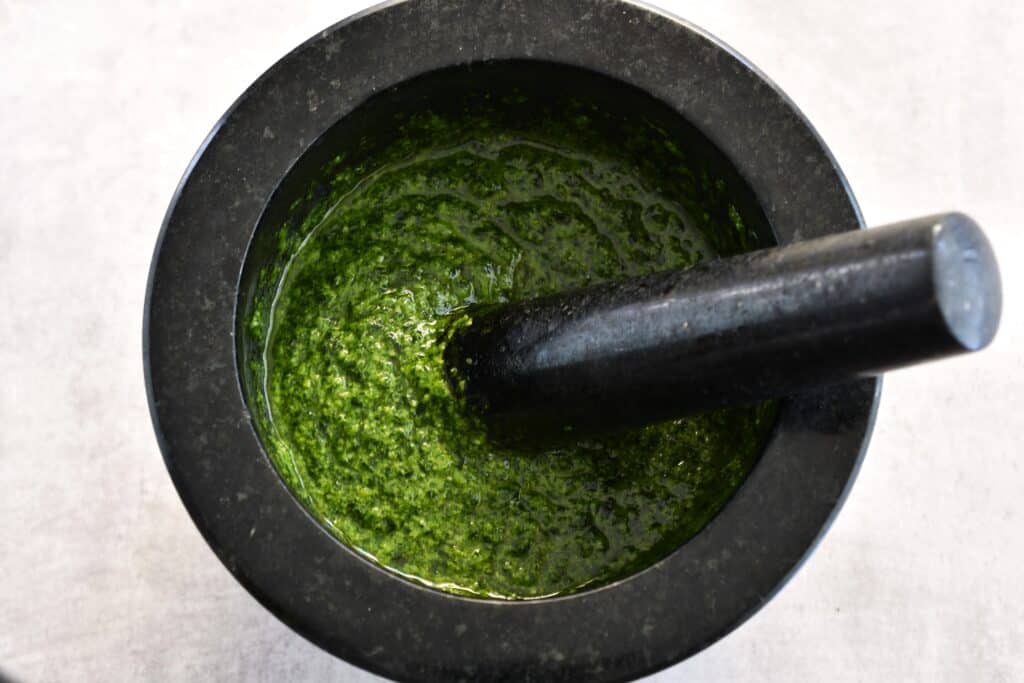
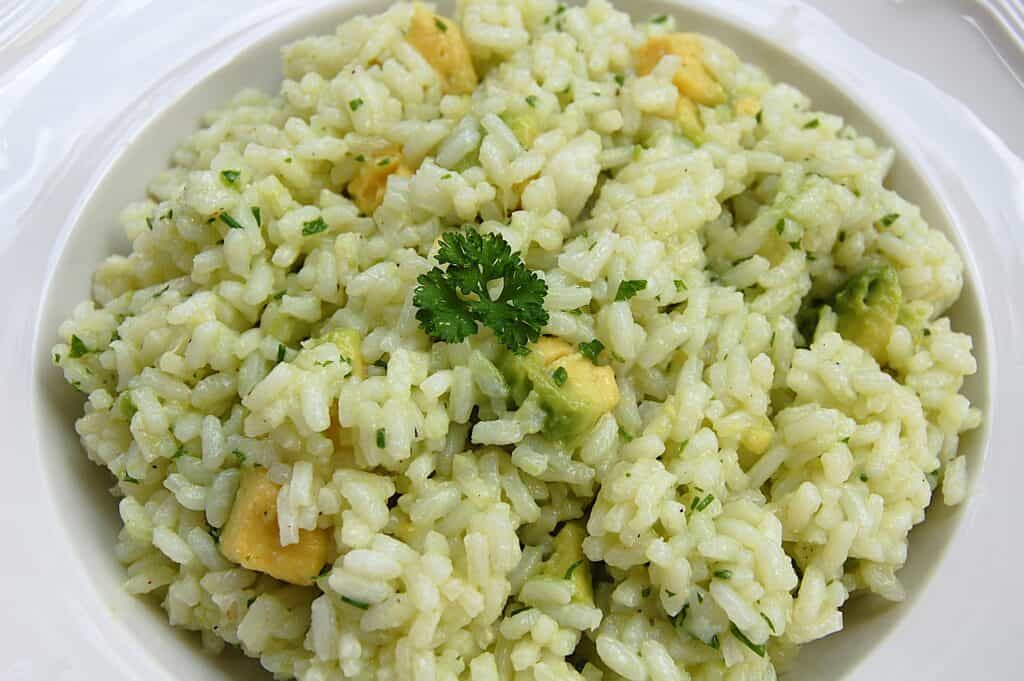
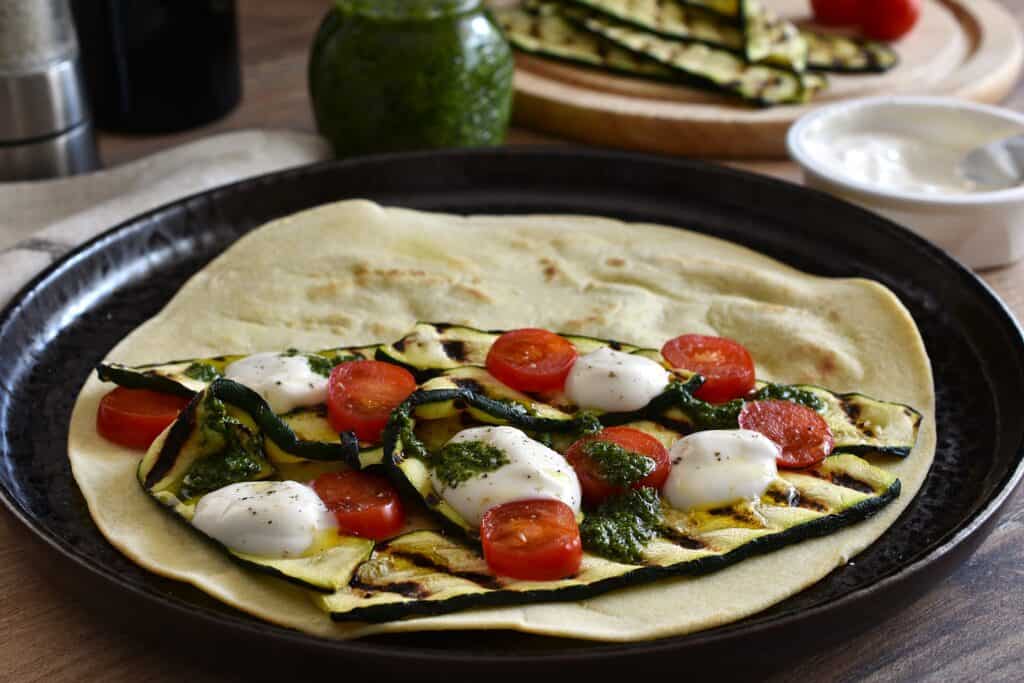
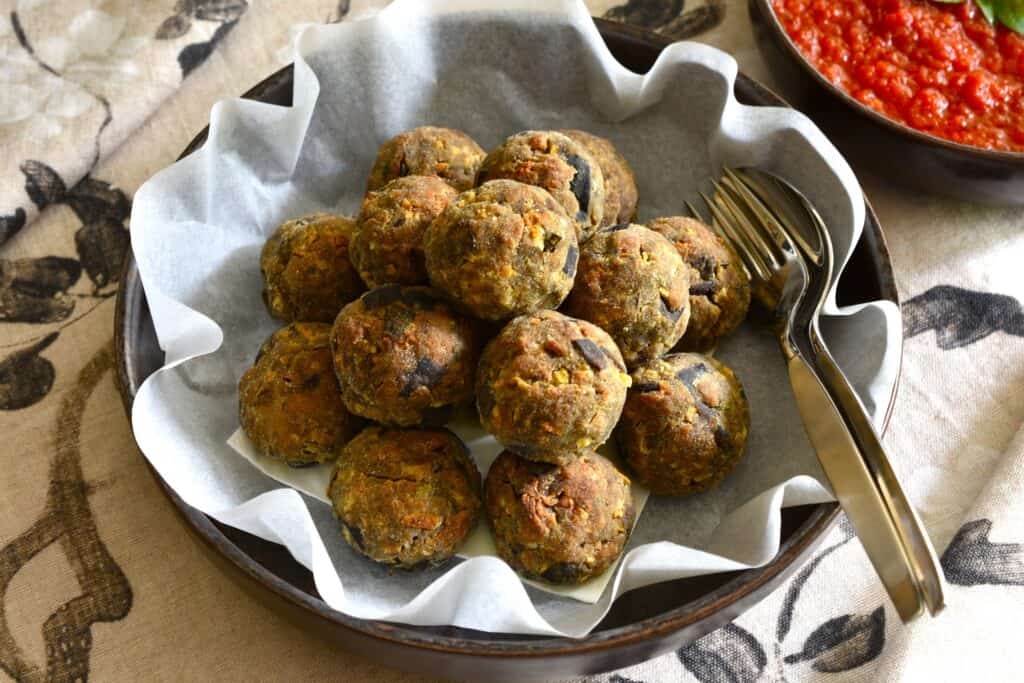
Polpette di melanzane (eggplant “meat”balls)
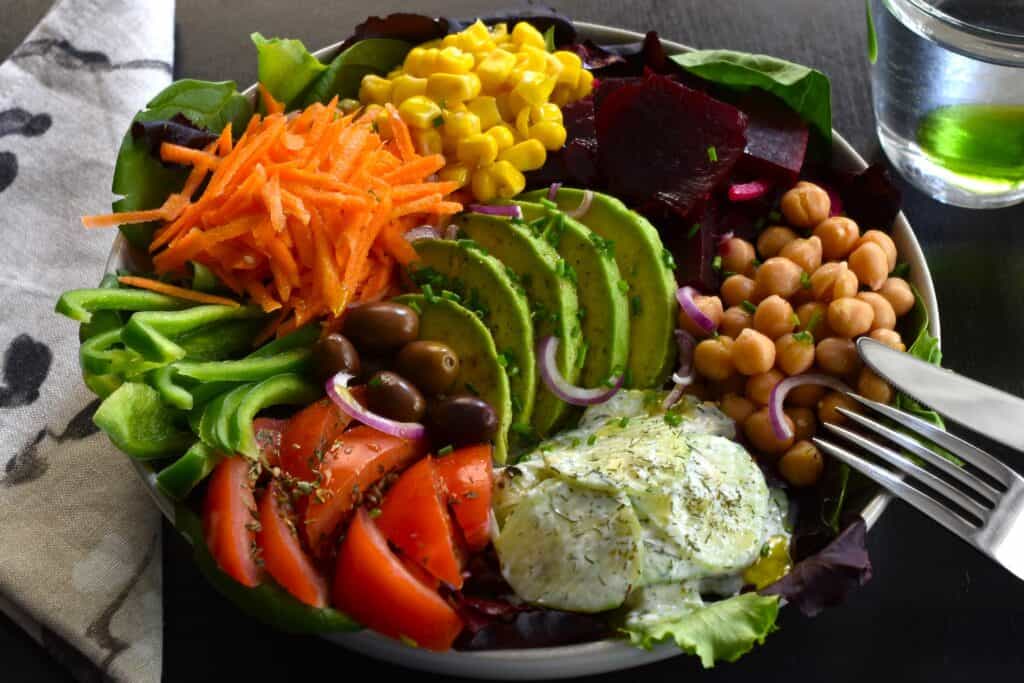
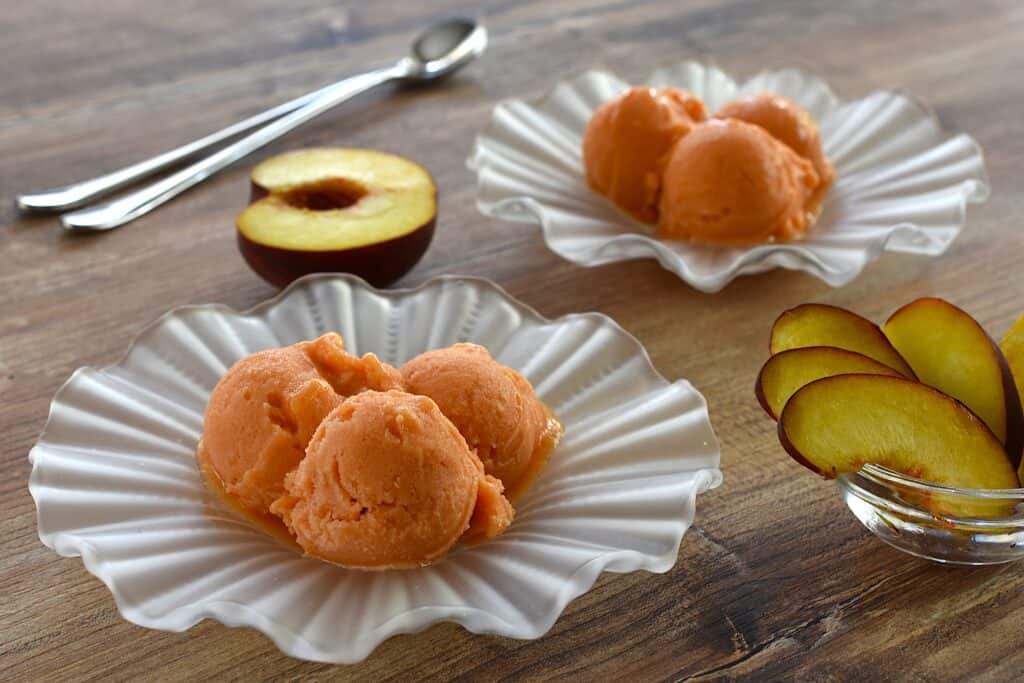
Would you like to receive my recipes as soon as I publish them? Subscribe below!


